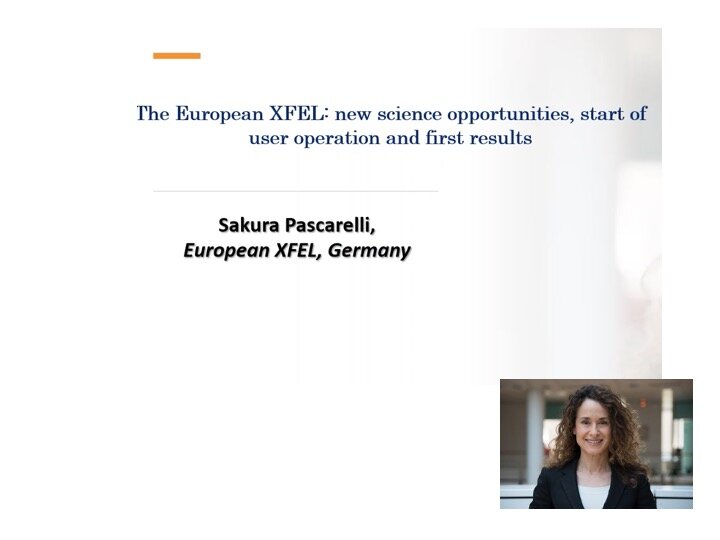VIDEO - Science at Large Scale Research Facilities - The European XFEL: new science opportunities, start of user operation and first results, with Sakura Pascarelli


VIDEO - Science at Large Scale Research Facilities - The European XFEL: new science opportunities, start of user operation and first results, with Sakura Pascarelli
In the past decade we have seen very important developments in the field of accelerator based X-ray user facilities, with the advent of 4th generation synchrotron sources and MHz rate free electron lasers. The first hard X-ray free-electron laser, LCLS (US) became operational in 2009 and over the last decade four additional hard X-ray FELs have begun user operation - SACLA (Japan), PAL-FEL (Korea), EuXFEL (Germany) and SwissFEL (Switzerland). Among these, the Eu-XFEL is the first hard XFEL powered by a superconducting linear accelerator, which enables MHz rate pulse generation.
Speaker: Sakura Pascarelli, European XFEL, Germany
This webinar is part of LINXS webinar series: Science at Large Scale Research Facilities, introducing the latest scientific breakthroughs and developments at large scale research facilities from all over the world.
Abstract
In the past decade we have seen very important developments in the field of accelerator based X-ray user facilities, with the advent of 4th generation synchrotron sources and MHz rate free electron lasers. The first hard X-ray free-electron laser, LCLS (US) became operational in 2009 and over the last decade four additional hard X-ray FELs have begun user operation - SACLA (Japan), PAL-FEL (Korea), EuXFEL (Germany) and SwissFEL (Switzerland). Among these, the Eu-XFEL is the first hard XFEL powered by a superconducting linear accelerator, which enables MHz rate pulse generation. A specificity of XFELs is their very short pulse duration (10-100fs) opening new scientific opportunities to probe matter at the atomic scale, with chemical selectivity and bulk sensitivity, and on the relevant timescales. Ultrashort, high intensity X-ray pulses from FELs are also providing a totally new approach to structural determination with X-rays, where useful structural information from very small, “radiation sensitive” or “dynamic” crystals is acquired before radiation damage sets in. After many years of construction, user operation at the Eu-XFEL has finally begun. In the Fall of 2017, two hard X-ray instruments FXE (devoted to studying extremely fast processes) and SPB/SFX (for investigating biomolecules and biological samples) opened to external users. Before the end of 2018, the two soft X- ray instruments SQS (Small Quantum Systems) and SCS (Spectroscopy and Coherent Scattering) followed. Finally, two additional hard X-ray instruments are presently welcoming first user groups: HED for studying matter under extreme pressures and temperatures, and MID for investigating nanostructures or irregularly ordered materials such as glass, liquids and biological substances. In this talk I will first briefly introduce the present performance of the facility in terms of electron and photon beam characteristics and operation modes. I will then report first results from early user experiments, and comment on some important challenges ahead.
Biography
Sakura Pascarelli received a Laurea in Physics at the University La Sapienza (Rome, Italy) and a PhD degree in Physics at the University Joseph Fourier (Grenoble, France). After joining the European Synchrotron Radiation Facility (ESRF, Grenoble, France) in 1993, her scientific career evolved around the development of methods to probe the local and electronic structure of condensed matter by synchrotron X-rays. In the past twenty years, her main scientific interest was the investigation of matter at extreme conditions of pressure, temperature and magnetic fields using principally X-ray Absorption Spectroscopy and X-ray Magnetic Linear and Circular Dichroism. She was in charge of the x-ray absorption spectroscopy beamlines ID24 (1997-2019) and BM23 (2000-2019), Head of the Electronic Structure and Magnetism Group (2012-2015) and Head of the Matter at Extremes Group (2015-2019). In September 2019 she joined the European XFEL (Hamburg, Germany) as Scientific Director responsible for the development of the scientific program on the four short-waved hard X-ray instruments.
